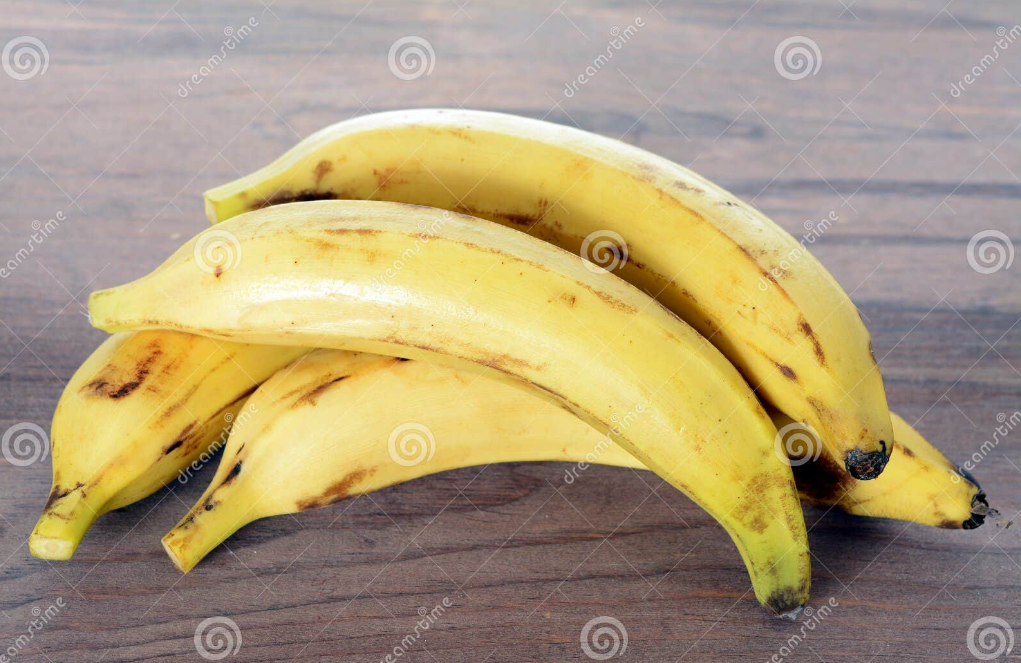Origin Of Plantain
Plantain is a staple food in many tropical areas and the major class of banana (genus musa) species. The edible fruit of plantain bananas has more starch than the typical dessert banana. They cannot be eaten raw. Plantains have the most starch before they ripen, they are either boiled, roasted, or fried.
The ripe fruits are mildly sweet and will gradually turn yellow when getting ripe until black when they are overripe. Dried plantain can be used in cooking or ground into powdered form for a meal or be further refined to flour.
The plantain plant is a gigantic herb that springs from an underground stem or rhizome. Most varieties are 3–10 meters (10–33 feet) tall and have a conical false “trunk” formed by the leaf sheaths of long spirally arranged leaves. The fruit, which is green to brown-yellow, is typically larger than the common banana and is borne in bunches.
Nutrient Composition Of Plantain
The nutrient composition in 100g of plantain are:
- Calories 122
- Total Fat 0.4g
- Sodium 4mg
- Potassium 499mg
- Total Carbohydrate 32g
- Dietary fiber 2.3g
- Sugar 15g
- Protein 1.3g
Preferred Botanical Name: Musa Paradisiaca
Preferred Common Name: Plantain
Local Common Name:
- Ibibio: Ukom
- Yoruba: Boli
- Igbo: Unere
Medicinal Properties And Uses Of Plantain
Some of the health benefits and uses of plantain include:
- It decreases inflammation
- It promotes wound healing by blocking microbial growth and relieving pain.
- It supports digestive health due to its rich fiber content.
- It is a good source of iron.
- It is recommendable for patients with chronic diseases such as diabetes.
How To Grow Plantain
Yield Information Of Plantain
Plantain takes a space of approximately 10-12 months to grow into full maturity. It produces fruits in bunches that may have 25-50 pieces or fingers of plantain.
Nursery and Transplant Requirements
Before planting, separate the topsoil from the bottom soil, then place the sucker in a hole and cover its corm first with the topsoil and then with the bottom soil. The new sucker requires nutrients, and the topsoil contains more nutrients than the subsoil hence the need to cover with topsoil first.
Add manure to the topsoil to enrich the soil more before placing the sucker in the soil. Place against the wall of the hole the side of the sucker corm, which was previously attached to the corm of its mother plant. On the loose part of the soil, place the opposite side of the corm towards the middle of the plant hole.
The best sucker (the future ratoon) will emerge opposite the planted sucker previously attached to the mother plant. If the land is sloping, the sucker should be so oriented that its follower will emerge against the slope. That will delay the development of the so-called high mat when the ratoon crop grows out of the soil and exposes the corm.
Soil and Sun Requirements Of Plantain
Generally, plantain will grow better in loamy soil because loamy soil has a higher rate of organic components such as decaying plants and animal and it is loose and fertile. Plantain requires deep soil, pulverized, well-aerated, and soil rich in organic.
Increased sunlight is suitable for plantain, as it aids their growth and prevents fungal diseases’ growth. The suitable weather condition for plantain is 27 degree celsius (98.6 degree F).
Watering Requirements Of Plantain
Plantain requires frequent watering to produce tasty fruit and preserve the large tropical leaves. During warmer months, water slowly and deeply every 2 or 3 days. The required rainfall ranges between 120 and 160 mm per month. Do not plant plantain in areas of prolonged rainfall.
You must make provision for manual irrigation if you want to plant in areas of prolonged rain.
Planting and Spacing Requirement Of Plantain
Spacing plantain gives them enough space to grow. However, plants should not be too far away from each other to shield themselves from direct sunlight. Space the plant 3 meters between rows and 2 meters within rows. This recommended spacing will contain up to 1600 plants on one hectare of land.
Harvesting Of Plantain
Generally, plantain is harvested by partly cutting the pseudostem 2 meters from the ground or at the upper thirds with a machete so the plant can bend with the bunch of fruits. Then the bunch is cut off from the pseudostem and taken away.
Storage Of Plantain
Store unripe plantain in a dark, cool place and refrigerate the ripe one when soft.
Disease and Pest
Anthracnose
Anthracnose is a fungi disease that causes brown spots on fruit peel and black lesions on green fruit. It is managed by protecting fruits from injury and removing flower parts that can harbor fungus.
Panama Disease
Fungi cause Panama Disease, it causes yellowing of leaves, splitting of leaf sheaths, and death of entire canopy. You can control panama disease by using disease-free suckers/corms/seeds.
Moko Disease
This is a bacterial disease, and symptoms include older chlorotic leaves, wilting, and collapsing pseudostem. Control moko disease by destroying the infected plant. Disinfect when you notice the moko disease on the plants.
Birds
Birds sometimes eat the fruits when ripe and are not cut away. You can prevent birds from eating your fruits by using natural enemies and scarecrows.
Conclusion
With a wealth of vital nutrients, plantains offer an array of health advantages. Brimming with complex carbohydrates and fiber, as well as essential vitamins like A, C, and B6, these versatile fruits prove to be a well-rounded source of nourishment. In addition to aiding digestion with its high fiber content, plantains shine as a noteworthy source of potassium, championing heart health by keeping blood pressure in check.
Moreover, these nutritious plantains are packed with powerful antioxidants that combat oxidative stress, decrease inflammation, and enhance immune function. Their adaptability in various dishes makes them an essential component of a healthy diet, promoting overall health and potentially assisting in weight management.
